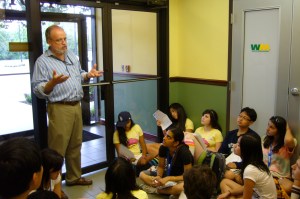Delayed Filing of Birth Defect Actions: Toxic Tort Exception to the General Rule in California
By James Scadden, Oakland and Don Willenburg, Oakland on October 7, 2014
Leave a comment
In Nguyen v. Western Digital Corp., the California Court of Appeal, Sixth Appellate District concluded that a child born in 1994 with pronounced birth defects purportedly caused by in utero exposure to various chemicals at the “clean room” workplace of her mother could nevertheless timely file an action against that employer in 2010.
The primary issue was which California statute of limitations applied, the six-year statute for pre-birth injuries (Code Civ. Proc., § 340.4) or the statute related to exposure to toxic substances (Code Civ. Proc., § 340.8). The two-year toxic statute of limitations is, however, tolled during a plaintiff’s minority.
Nguyen grappled with these issues through more than 30 pages of detailed legal analysis and interpretation of legislative intent, and ruled in favor of the plaintiff.
Construing both section 340.4 and section 340.8, we hold that claims based on birth or pre-birth injuries that are due to exposure to hazardous materials or toxic substances are subject to the limitations period in section 340.8. We also hold that even though section 340.8 did not take effect until almost 10 years after Plaintiff was born, it applies in this case because the allegations of the third amended complaint support a claim of delayed accrual until December 31, 1998. And since Plaintiff’s claims did not accrue until that date, they were not barred by the six-year limitations period in section 340.4 (pre-birth injuries) on January 1, 2004, when section 340.8 (toxic exposures) went into effect. Moreover, since Plaintiff’s claims were subject to the limitations period in section 340.8 when it took effect, she is entitled to tolling for minority that applies to section 340.8 claims. Thus, her action filed on October 25, 2010, when she was 16 years old, was timely.
The plaintiff had adequately alleged “a claim of delayed accrual until December 31, 1998” because that was allegedly “the last possible date that ‘health service providers affiliated with . . . [employer] falsely represented to [parent] . . . that there was no causal connection between [parent’s] occupational chemical exposure and [Plaintiff’s] injuries.’ ”
The court analyzed the application of the two statutes by first looking at section 340.4:
Since the allegations of the third amended complaint support a claim of delayed accrual until December 31, 1998, [Plaintiff]’s claims were not barred by the six-year limitations period in section 340.4 (pre-birth injuries) on January 1, 2004 when section 340.8 (toxic exposures) went into effect.
Having resolved the question of a possible bar by the earlier-enacted section 340.4 favorably for the plaintiffs, the court moved on to the later-enacted section 340.8:
Since her claims had not yet expired, she was entitled to rely on the statute of limitations in section 340.8, which included tolling for minority. Thus, [Plaintiff’s] action filed on October 25, 2010, when she was 16 years old, was timely.
It is difficult to say how far-reaching this decision may become with regard to birth defect cases in California. Perhaps it will have no effect other than on cases involving children born within six years prior to the January 1, 2004, effective date of the toxic tort statute. Further, in this opinion the court had to take all of the plaintiffs’ allegations as truthful, since the ruling in the court below was at the demurrer stage, and pursuant to rules of statutory interpretation the court was obliged to seek any set of facts that would allow for a conclusion that the action was timely filed. The court found such a set of facts by accepting the contentions of the family that they did not suspect any chemical cause of the birth defects as of 1998 such that one statute did not extinguish the claim, and then supplanting that statute with application of a second, later-enacted statute so as to afford the family more time to file.
It could have been worse. The plaintiff also alleged that pursuant to the discovery rule, the action should not be deemed to have accrued until 2008, when family members heard on the radio that attorneys were investigating cases of birth defects caused by chemical exposures in the semiconductor industry … contacted the attorneys and “learned for the first time” of the potential harm from the chemicals at work. Nguyen did not address that issue, because it found the action timely on other grounds. If the plaintiff’s argument was adopted, it would essentially mean that attorney advertisements would become the trigger for statutes of limitations, which in turn would mean the certainty of the statute would vanish.
Perhaps the lesson to be learned here is that defeating what initially appears to be a stale birth defect claim by application of the statute of limitations in California is going to be a difficult, but not impossible task. The Sixth Appellate District issued two other unpublished decisions (meaning they cannot be cited as precedent in California) also interpreting application of the California statutes of limitations and the discovery rule in “clean room” cases involving delayed filing of actions for birth defects. In one, Ovick v. National Semiconductor Corp., the ruling of the trial court dismissing the action at the demurrer stage was reversed. In the second, Studdendorf v. National Semiconductor Corp., the court sustained a dismissal at the demurrer stage. While the case cannot be cited, it may still have value in suggesting a way to convince a court that the discovery rule means something other than an attorney telling you it is a problem.
In Studdendorf, as in the other cases, the plaintiffs alleged that “Parents did not know [the child’s] birth defects were caused by workplace exposure to hazardous chemicals until December 2008, when they heard on the radio that their attorneys were investigating cases of birth defects caused by chemical exposures in the semiconductor industry.” One key difference in this case: “But Plaintiffs also allege that around the time Christopher was diagnosed with retinoblastoma in October 1987, Parents asked [their employer] ‘whether they had worked with or otherwise been exposed to any hazardous chemicals.’ ” In 1987, only the six-year statute was in effect, so the plaintiff “was required to file suit within six years of discovery, or no later than October 1993.”
Parents suspected that Christopher’s injuries were caused by chemical exposure in their workplace. The averments of the second amended complaint support the conclusion that they suspected both wrongdoing and the alleged cause of Christopher’s injuries shortly after the diagnosis when they went to NSC and asked “whether they had worked with or otherwise been exposed to any hazardous chemicals.” The use of the word “hazardous” supports the conclusion that Parents suspected something in their work environment was dangerous to human health; not simply a cause, but a wrongful cause.
Thus, defendants in long-delayed birth defect cases should pursue any evidence that parents asked employers, or for that matter perhaps doctors or anyone else, about possible causes of harm near the time the defects first became apparent.
Challenges to the timeliness of such actions must be considered and made. And if at first the defense does not succeed, similar arguments can be resurrected after discovery and investigation through a summary judgment motion. In the final analysis, it may remain difficult to convince courts to dismiss such cases on statute of limitations arguments. The rules of statutory interpretation allow the courts to seek a means of maintaining actions that have such strong emotional appeal.

 33030(u), on December 16, 2012 in New York County Supreme Court, the Hon. Louis B. York excluded the expert testimony of plaintiff’s two key causation experts in a toxic tort case where plaintiff alleged that a child’s birth defects were attributable to the mother’s in utero exposure to gasoline vapors.
33030(u), on December 16, 2012 in New York County Supreme Court, the Hon. Louis B. York excluded the expert testimony of plaintiff’s two key causation experts in a toxic tort case where plaintiff alleged that a child’s birth defects were attributable to the mother’s in utero exposure to gasoline vapors. In an
In an  literature with cerebral palsy and the other abnormalities alleged. We discussed that if plaintiff is able to prove general causation, she will then have to prove specific causation, that is, whether the dose and duration of exposure to the purported teratogen was sufficient to cause the specific birth defect.
literature with cerebral palsy and the other abnormalities alleged. We discussed that if plaintiff is able to prove general causation, she will then have to prove specific causation, that is, whether the dose and duration of exposure to the purported teratogen was sufficient to cause the specific birth defect. For her part, Dr. Linda Frazier opined that the mother was exposed to developmental hazards due to substances and compounds found in gasoline vapors, which included toxic substances capable of severely damaging a developing fetus during the first trimester. She was able to determine that the exposure levels by the mother to gasoline were high, based upon her reported symptoms of headache, nausea and irritation of the throat. Studies have found that these symptoms occur at gasoline vapor concentrations of at least 1,000 ppm.
For her part, Dr. Linda Frazier opined that the mother was exposed to developmental hazards due to substances and compounds found in gasoline vapors, which included toxic substances capable of severely damaging a developing fetus during the first trimester. She was able to determine that the exposure levels by the mother to gasoline were high, based upon her reported symptoms of headache, nausea and irritation of the throat. Studies have found that these symptoms occur at gasoline vapor concentrations of at least 1,000 ppm. should find useful. My observations about some of the notable points in Judge York’s decision are as follows:
should find useful. My observations about some of the notable points in Judge York’s decision are as follows: